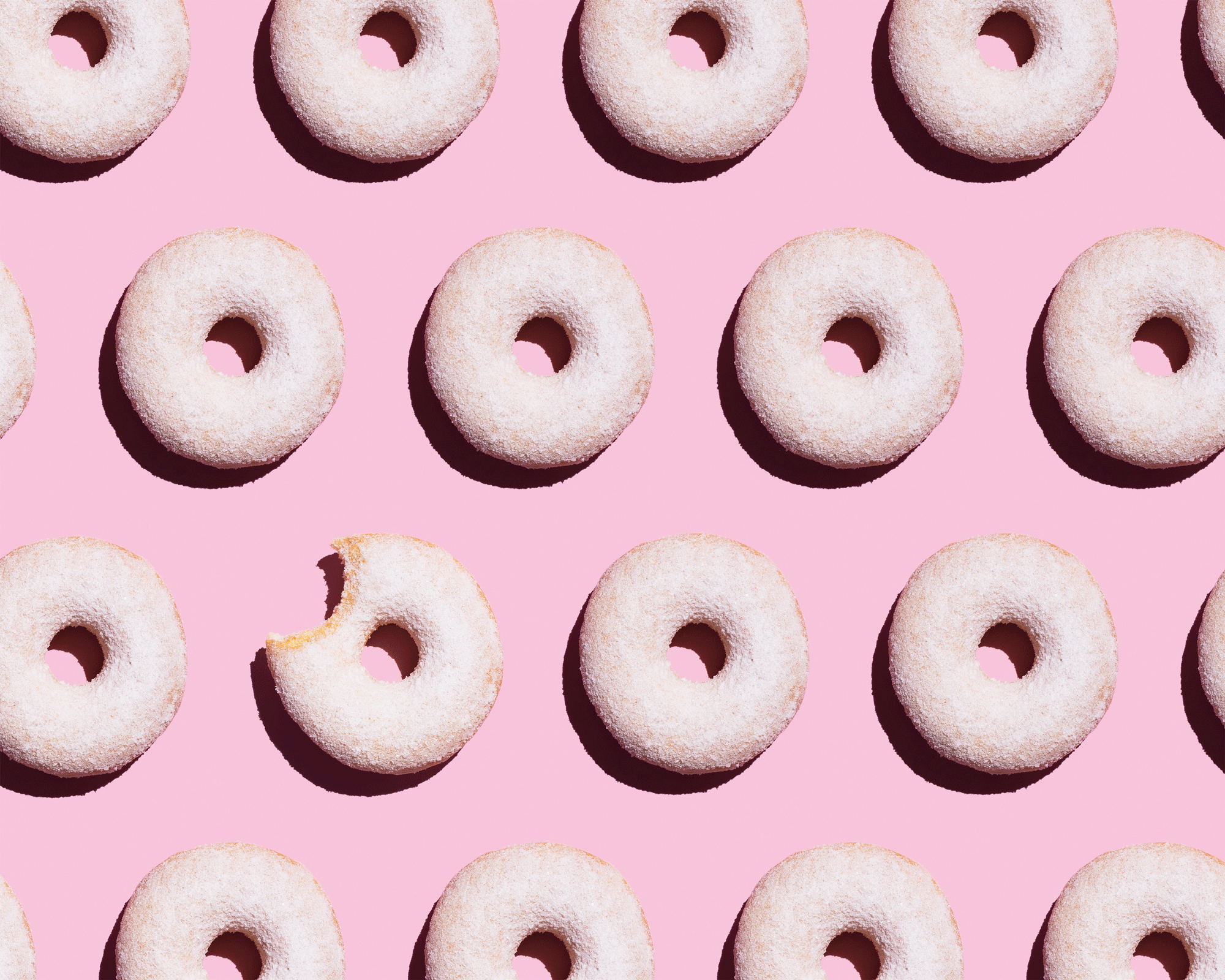
You may be eating too much sugar. On average, adults in the United States consume 77 grams of sugar per day, more than three times the recommended amount for females and twice the amount for males. That amount adds up to more than 60 pounds, or six 10-pound bowling balls, of added sugar per year.
The American Heart Association (AHA) recommends no more than 6 teaspoons (25 grams) or 9 teaspoons (38 grams) of added sugar daily for women and men, respectively. While some sources of added sugar are obvious—like soda, candy, or the sugar you add to your coffee—the sweet stuff can sneak into your diet unexpectedly.
Your body needs one type of sugar, called glucose, to survive. Your body breaks down carbohydrates into their simplest form, glucose, to use as its primary energy source.
Sugars naturally exist in foods like fruits, vegetables, and milk. Consuming those foods gives you the nutrients that your body needs for energy.
However, the average American gets 270 calories per day from added sugars, which manufacturers add to make foods and drinks extra tasty. If you’re consuming 2,000 calories daily, that’s about 14% of your daily caloric intake.
Food with added sugars can be high in calories and may not offer as many healthful benefits as fruit, vegetables, and other natural sources of sugar. On average, people in the United States consume about 22 teaspoons of added sugar daily.
You may know the links between sugar and cavities or weight gain. However, too much sugar can impact health in several other ways.
Heart Disease
The AHA’s recommended daily limit recognizes the link between surplus sugar and heart disease. Heart disease was the leading cause of death in the United States in 2021.
One study showed that people who consumed 17% to 21% of their calories from added sugar had a 38% higher risk of dying from cardiovascular disease than those who consumed 8% of their calories from added sugar.
Suppose you eat 1,600 calories daily, which is the typical need of an adult cisgender female. In that case, you’ll want to limit your added sugar intake to 128 calories daily, which is 8% of your total calories.
Diabetes
Excess sugar also ups the risk of type 2 diabetes. In fact, some evidence suggests that every 150-calorie increase in sugar consumption per person daily increases the proportion of the population that develops diabetes by 1.1%.
Cancer
Some evidence suggests a link between certain cancers and excess sugar intake. That link may be direct or indirect since sugar connects to weight gain, inflammation, and insulin resistance. All of those facts boost cancer risk.
Your Skin
Surplus sugar also impacts skin health. Researchers in a 2020 study found that among nearly 25,000 participants, consuming high-fat and sugary beverages were directly related to acne.
Gout
Too much sugar may increase uric acid production. Uric acid boosts the risk of gout, a painful form of arthritis. Gout symptoms include painful, swollen joints that may appear red. You may also notice that your joints are stiff and red with gout.
Your Energy Levels
An excess of the sweet stuff can zap your energy. Using data from over 30 published studies, a 2019 review found that sugar impacts mood, including fatigue, anger, alertness, and depression.
The researchers concluded that people who ate sugar felt more tired and less alert within one hour than those who had not, even while doing mental and physical activities.
Likewise, the researchers found no positive effects on mood after consuming sugar. In other words, sugar may not perk you up.
Depression
Other evidence suggests that surplus sugar intake increases the risk of depression. One study, which studied over 60,000 women, found that those with the highest added sugar intakes were significantly more likely to have depression.
One of the best ways to reduce sugar is to limit your intake of drinks like soda, sweet tea, and lemonade.
Also, be selective and strategic with obvious sugary foods, like baked goods, ice cream, and other treats. Rank indulgences on a scale from zero to five, with zero being just “meh” and five being a “can’t live without” favorite. If something doesn’t rate at least a four, you probably won’t regret forgoing it.
Enjoy truly special goodies, but make simple tweaks to create balance. For example, if you want a cookie after lunch, opt for a veggie-packed salad topped with lean protein instead of a carb-heavy sandwich or wrap.
To scope out concealed sources of sugar, become an avid label reader. Look at not just the grams of sugar on the nutritional facts panel but also the ingredient list for terms that end in “-ose,” like glucose, fructose, dextrose, and maltose, as well as syrups.
When the foundation of your diet is fresh, unprocessed whole foods and less packaged foods, you’ll automatically slash your added sugar intake. Making the switch can make an impactful change in your daily energy and overall health.
